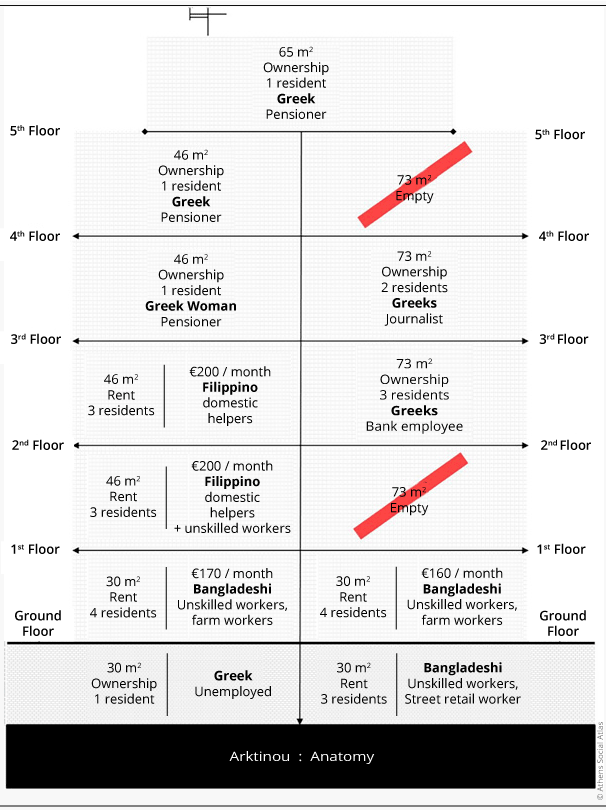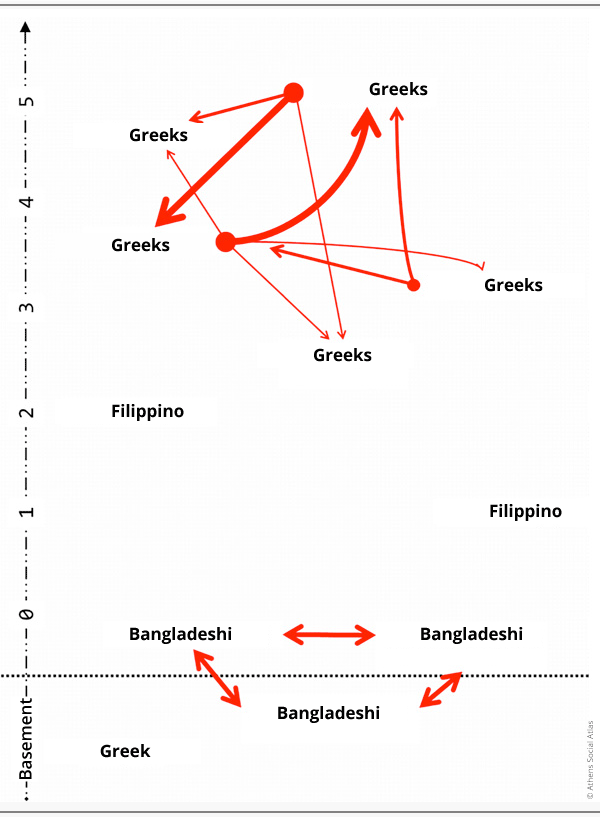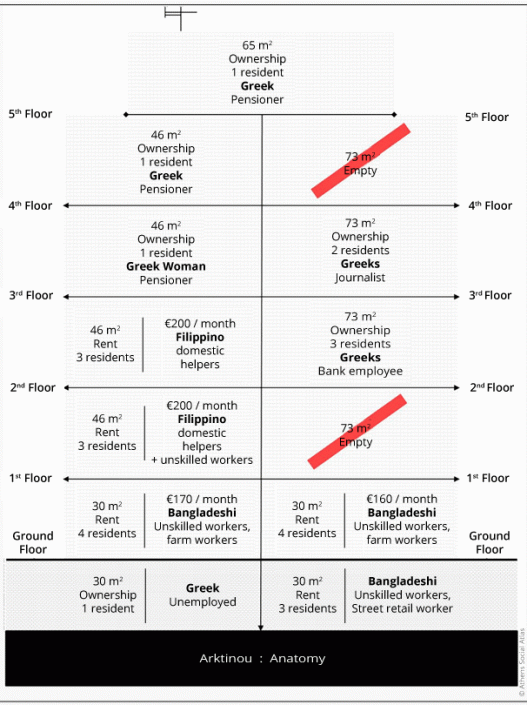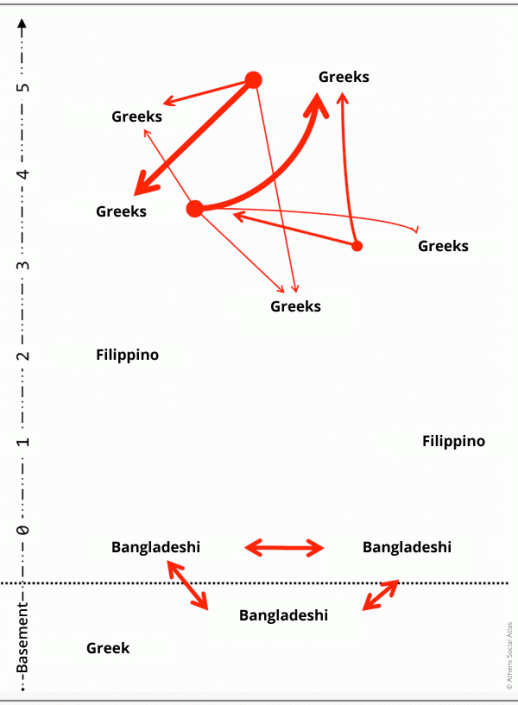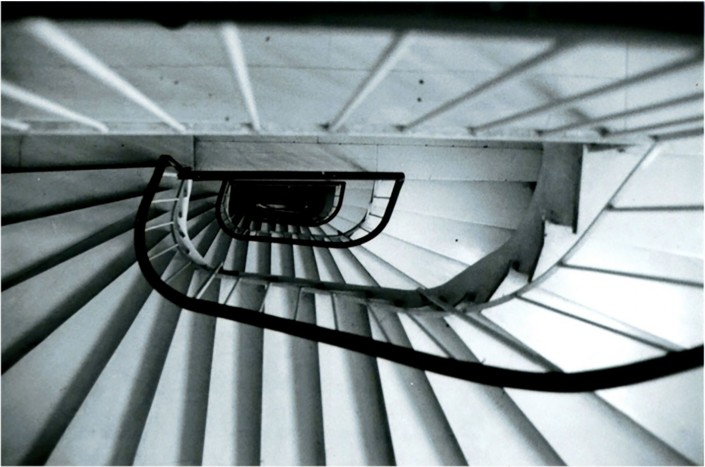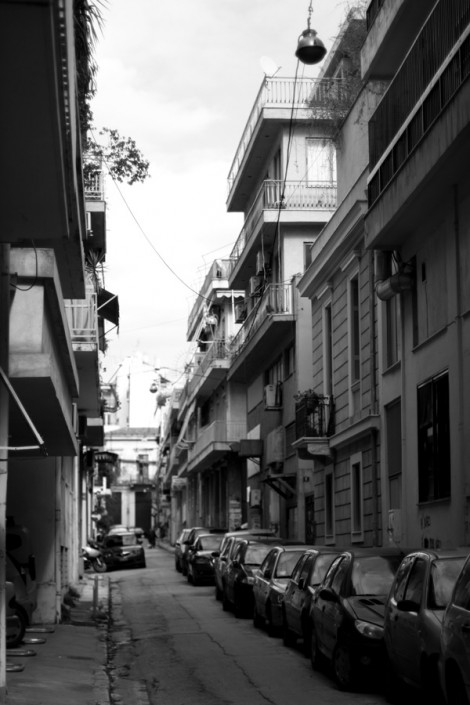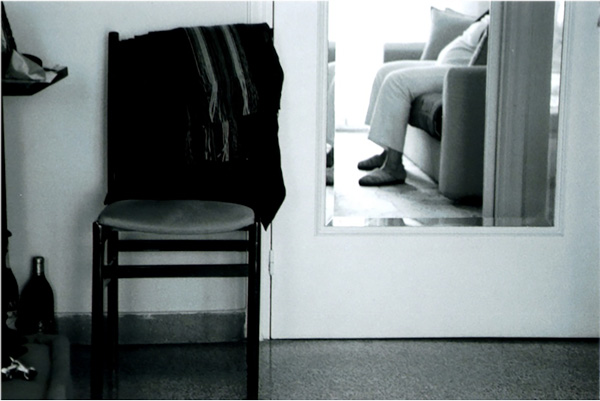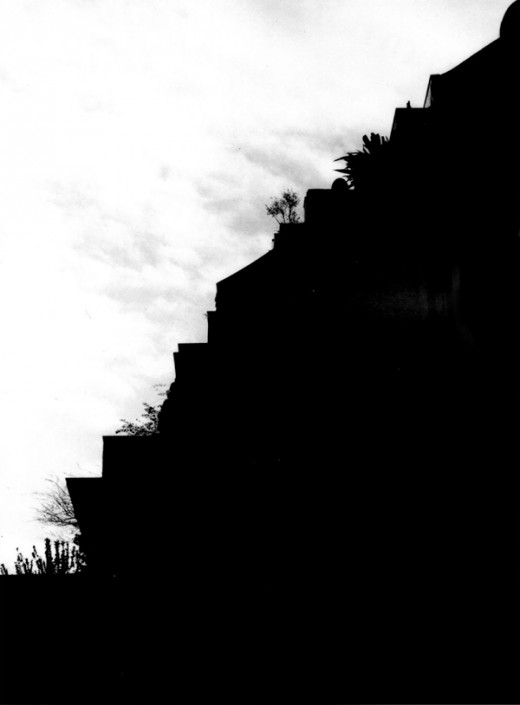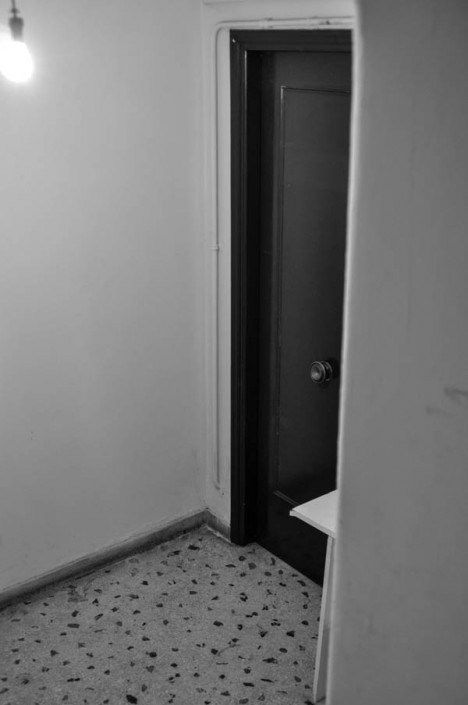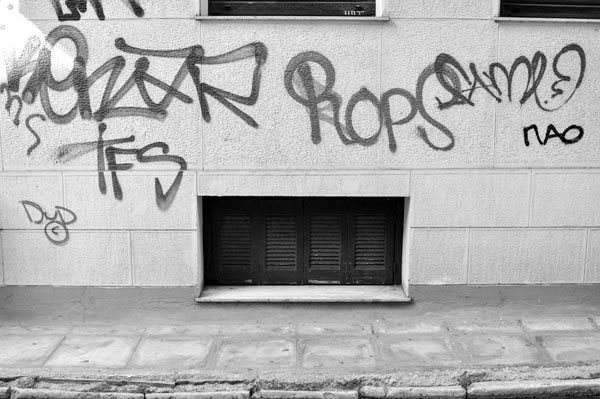Spatial proximity and social distances: vertical social differentiation in an appartment block of Athens
Bourlessas Panagiotis
Built Environment, Ethnic Groups, Housing, Social Structure
2015 | Dec
“Everything here coexists within walking distance”
Vasilis Karapostolis, Handmade City
Functioning like the ‘capacitor’ of a recently shaped human heterogeneity, the Athenian appartment block, known as polykatoikia, may turn into a situated case of ‘spontaneous’ social mix between Greek and non-Greek residents. The previously vacant appartments of the buildings’ lowest floors played the role of a non-existent social housing by accommodating migrants that arrived in the city’s central neighbourhoods from the early 1990’s. The outcome of this inward movement is the coexistence between these ethnic groups and the Greek residents of the upper floors, a phenomenon that is known as vertical social differentiation (Leontidou 1990, Maloutas & Karadimitriou 2001, Maloutas & Spyrellis 2015). The ethnic diversity of Athens manifests itself through a vertical cohabitation of ‘natives’ and migrants by shaping a stratified human geography of high proximity at the building’s micro-scale.
The spatial distance and isolation of population groups (e.g. socio-economic categories, ethnic groups) is correlated with social inequalities and is therefore negatively loaded in scholarly tradition. However, such direct equations of spatial and social distance have been now challenged as spatial proximity and ethnic mixture may shadow different types of marginalisation and weak integration (Chamboredon et Lemaire 1970). Beyond actual space, Bourdieu (1985) conceptualised society as a notional space where groups and individuals occupy relational positions. This social spacing is attributed to hierarchical relations based on accumulated capital (material and symbolic) and manifests itself through symbolic distances and proximities amongst actors. Hence, if the Athenian polykatoikia and the contained social differentiation are seen as social space with vertically expressed relations, it is the social —not merely spatial— distances that have to be explored.
Activating sociological and geographical imagination, this text analyses the vertically differentiated polykatoikia as a case of high inter-ethnic proximity. Departing from the position that there are no a priori spatial units (Preteceille 2007), a different interpretation of socio-spatial divisions is proposed beyond general maps and quantitative data that present an urban world ‘seen from above’: rather the role of the building’s micro-scale is sought. Focusing on the ‘native’ side of the vertical cohabitation, the description of one Athenian polykatoikia unveils social distances that may occur in cases of spatial proximity between Greeks and non-Greek ethnic groups, stresses the complexity of the building as a spatial unit, and expands towards cultural understandings of the phenomenon.
The polykatoikia [1] is located in Arktinou street, Pagkrati neighbourhood, central Athens. Its vertically expressed social diversity renders the case perhaps exemplary: there appears a positive correlation between floor of residence, ethnicity, class, presence in the city and occupancy status; Maloutas & Karadimitriou (2001) have proved such relations on a broader scale. For the hereby research, the distribution of ethnicities and housing characteristics throughout the floors were firstly documented. Then, exploring the inter-ethnic coexistence from the ‘native’ side, stories from four out of five Greek households have been collected; their focus was the physical proximity of foreign nationals and the perceived community feeling within the building. Furthermore, observation has been conducted at the commonly used main entrance, seeking to contribute to the interaction pattern, the latter indicated by the Greek discussants. Research weaknesses, such as the lack of evidence concerning Philippino residents (for methodological reasons, e.g. observation difficulties due to floor of residence), ought to be recognised.
In late afternoon discussions in a foreign language are spread all over the main entrance and the appartments’ doors remain open so that residents move freely from one house to the other; ‘they speak too loudly’, a Greek resident will later comment four floors above. The four appartments of the basement and ground floor host three (multi-person) Bangladeshi and one (single-person) Greek households. The basement flats have very limited sunlight and ventilation. On top of poor lighting and ventilation, lower floor flats have visible humidity on the walls and are in close proximity to the noisy street; in July (when the research was conducted) the windows may remain open all day long due to high temperatures. On the first floor a family from the Philippines is found. According to the Greek interviewees they were the first to arrive in the block ‘even before the Albanians’, and had initially settled in the basement; years later they have spatially ascended. The inter-ethnic ‘property ladder’ is completed by recently arrived Bangladeshis, who have taken over the Philippinos’ primal positioning: in the stories, they were repeatedly referred to in a derogatory manner by Greek residents as ‘the people from the basement’, the ‘dark skinned’ and the ‘foreigners’; on the contrary, ‘natives’ were mentioned mostly by their names. A Greek and a Philippino household ‘share’ the two appartments of the second floor, while only Greeks reside on the third, fourth and fifth floors.
All ‘native’ households live in owned apprartments: ‘we, the homeowners, are a sort of community in the polykatoikia’, one stated. Occupancy seems to be a crucial element of a shared identity, excluding at the same time tenants, the latter being composed in our case exclusively by non-Greeks. Regarding the domestic space per capita, significant ethnic-based differentiations are documented: thirty-seven, fifteen and eight square meters account respectively for each Greek, Philippino and Bangladeshi resident. Nevertheless, the type and composition of households occurs pivotal to these numbers: the building’s Bangladeshis live in collective, male-dominated households, the Philippinos shape nuclear families while single-person households are strongly present amongst the Greek ones, especially on the highest floors. A notional section of the buiding (see Figure 1) visualises the ethnic distribution and summarises the research’s quantitative aspect.
Figure 1: “Anatomy” of the building at Arktinou street, residential distribution and quantitative research data.
Besides tangible differences, the Greek residents’ stories express cultural processes of social distancing. On an early afternoon during one of the discussions on the third floor, cooking odours enter the flat from the kitchen’s window: ‘their food smells bad’ the discussant emphatically said referring to her neighbours below. While the man living in the adjacent flat mentioned that ‘[he dislikes] the immigrants who live here’, the one from the bright and quiet 65sqm last floor said that he would accept social proximity with Philippinos in a labour commitment: ‘as [his] gardeners’, for example. Nevertheless, beyond inter-ethnic dynamics broader concerns about the weak nowadays social bonds were expressed: ‘each of us lives on his/her own, we do not spend time altogether’; and ‘there are not families here anymore’, an opinion that seems to overlook one Greek and two Philippino nuclear families. Regarding the everyday interaction within the building, there appears a perhaps ‘polarised’ pattern: Greek households indicated contacts that are strongly limited amongst themselves, thus on the highest floors, and without links with the building’s foreign ethnicities. Similarly, the Bangladeshi residents of the lowest floors showed the own ‘cluster’ through their in-group interaction and activation of the common spaces, namely the main entrance (see Figure 2). Practical issues, such as linguistic barriers, were mentioned regarding inter-ethnic communication while an exploration of the Philippino side would considerably enrich the image. Nevertheless, merely ethnicity does not automatically result in social proximity: for instance, the Greek man of the basement is excluded from the upper-floor daily interactions; he appears in the ‘native’ discourse as ‘the drunken one’ and ‘who has issues with the police’.
Figure 2: Interaction among residents of the building at Arktinou street: floor, nationality and concentration
In this stratified social space, Greek residents are located almost exclusively on its summit, namely the upper-floor apartments of improved living quality. From there they possess the power to shape a discourse that distinguishes themselves and defines the ‘other’. The least privileged positions in the spatial hierarchy belong mainly to migrant households who live on the lowest floors. Limited housing qualities, tenancy status and low occupational categories characterise this part of the polykatoikia. Migrant residents do not compose a uniform group though as differentiations appear in terms of housing quality, domestic space per capita and household type. The overall by-floor spatialisation seems to be generally correlated with, and an expression of an ethnic group’s presence in the city, and consequently of the individually and collectively possessed social capital. Yet any general ‘image’ is challenged by the ‘native’ presence in the basement: the man’s unfavourable social and spatial positioning exceeds any taken-for-granted ‘integration’ that may derive from homeownership, and reveals a possible class-based exclusion within the overall ethnic-based exclusion.
The described social space though can be interpreted through the symbolisms it creates and reproduces especially when linked to actual space, the latter offering the ground for the condition’s ‘naturalisation’. Via processes of ‘social spatialisation’ (Shields 1991), dominant groups may signify material space in a way in order to establish specific, and often explicitly desired, perceptions within a system of social hierarchies; it is the same system which the world will be afterwards understood through. The vertical social differentiation of the Athenian polykatoikia may have to suggest something more than a mere coexistence between Greeks and non-Greeks. The building’s spatial stratification can prescribe a specific vocabulary and imagination of the hierarchy: some are placed ‘above’ while others are placed ‘below’. Accordingly, the ‘verticality’ of cities becomes often an allegory of power relations (Hewitt & Graham 2015). As if in an Athenian version of sci-fi movies (such as Fritz Lang’s ‘Metropolis’), the Greeks’ stories of the polykatoikia in Arktinou street show that their ‘otherness’ may not only be of different skin colour or nationality: it can also be the one ‘from below’, ‘of the basement’. And the owned apartment, when combined with ethnicity, further clusters —materially throughout floors, symbolically through relationships— ‘native’ residents. Nevertheless social proximity cannot be adequately guaranteed by ethnicity and homeownership as these lines of division intersect with that one of class too, as the case of the basement’s Greek resident indicates. Like a material demonstration of those who are placed ‘above’, a Greek flag is visible on the last floor’s balcony: it marks an imagined ‘native territory’, shaped on the building’s upper part. This territory is located ‘above’ foreign nationals, tenants or even Greek homeowners of lower social classes, expressing dimensions of social status and symbolic exclusion. The socio-spatial positioning —and distancing from the upper-floor community— of the Greek household in the basement may nowadays signify a ‘native counter-territory’: one that is being shaped ‘below’ and ‘belongs to’ an emerging underclass that still possesses benefits of a family-based ‘welfare system’ (such as homeownership).
To conclude, there exists a multiplicity of ‘moral geographies’ (see Cresswell 2005) that may be constructed within the vertical social differentiation of the Athenian polykatoikia, especially when the phenomenon is so widespread in central neighbourhoods. Departing from the actual space and the included complexity of interrelations and inequalities, the verticality of a coexistence between Greeks and migrants is subject to specific significations. Class, ethnicity and floor of residence intersect within the building’s social space and orachestrate a dominant vocabulary. In the collected ‘native’ discourse some appear to ‘belong’ to lower floors while others to higher, a view that can contribute to broader perceptions about ‘who belongs where’ in the vertical social hierarchy. It is this very ‘belonging’ in the polykatoikia’s material space and its correlation with the ‘belonging’ in the imagined social verticality that we need to investigate. For the in-between area of the two spheres legitimises actions that establish and reproduce ideologies and beliefs that section the city vertically; constantly in between allegory and reality.
[1] The study was conducted in the summer of 2013, as part of the author’s master thesis for the University of Vienna, under the supervision of Jesus Leal (Universidad Complutense de Madrid).
Entry citation
Bourlessas, P. (2015) Spatial proximity and social distances: vertical social differentiation in an appartment block of Athens, in Maloutas T., Spyrellis S. (eds) Athens Social Atlas. Digital compendium of texts and visual material. URL: https://www.athenssocialatlas.gr/en/article/polykatoikia/ , DOI: 10.17902/20971.2
Atlas citation
Maloutas T., Spyrellis S. (eds) (2015) Athens Social Atlas. Digital compendium of texts and visual material. URL: https://www.athenssocialatlas.gr/en/ , DOI: 10.17902/20971.9
References
- Préteceille E (2007) Η κοινωνική κατασκευή του στεγαστικού διαχωρισμού: Συγκλίσεις και αποκλίσεις. Επιθεώρηση Κοινωνικών Ερευνών 122(A): 107–135.
- Bourdieu P (1985) The social space and the genesis of groups. Theory and society, Springer 14(6): 723–744.
- Chamboredon J-C and Lemaire M (1970) Proximité spatiale et distance sociale. Les grands ensembles et leur peuplement. Revue française de sociologie, JSTOR 11(1): 3–33.
- Cresswell T (2005) Moral Geographies. In: Atkinson D, Jackson P, Sibley D, et al. (eds), Cultural Geography: A Critical Dictionary of Key Ideas, London, New York: IB Tauris, pp. 128–134.
- Hewitt L and Graham S (2015) Vertical cities: Representations of urban verticality in 20th-century science fiction literature. Urban Studies, Sage Publications 52(5): 923–937.
- Kokkali I (2007) Spatial proximity and social distance: Albanian migrants’ invisible exclusions, an evidence from Greece. In: 3rd Hellenic Observatory PhD Symposium on Contenporary Greece, London: LSE. Available from: http://www.lse.ac.uk/europeanInstitute/research/hellenicObservatory/pdf/3rd_Symposium/PAPERS/KOKKALI_IFIGENEIA.pdf.
- Maloutas T and Karadimitriou N (2001) Vertical social differentiation in Athens: alternative or complement to community segregation? International journal of urban and regional research 25(4): 699–716. Available from: http://www.ncbi.nlm.nih.gov/pubmed/17672030.
- Pink S (2009) Doing sensory ethnography. 1st ed. Seaman J (ed.), Melbourne: Sage.
- Shields R (1991) Places on the margin: Alternative geographies of modernity. 1st ed. London: Routledge.

